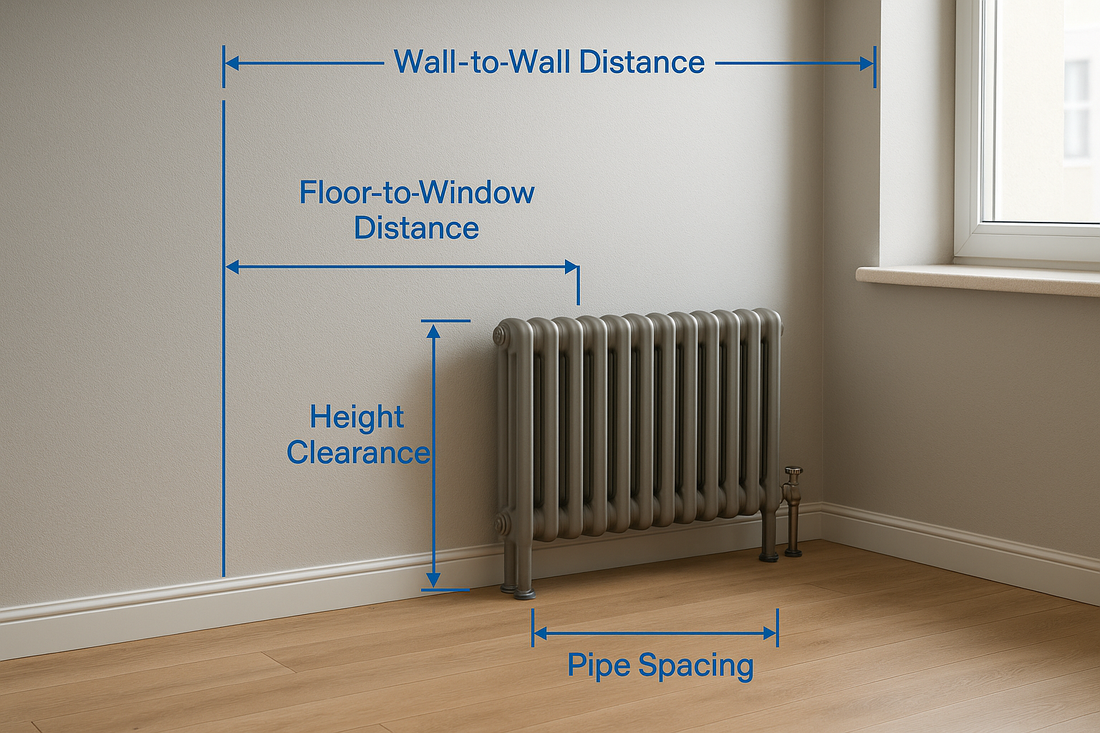
How to Measure for a New Radiator: A Step-by-Step Guide
Share
How to Measure for a New Radiator: A Step-by-Step Guide
Buying a new radiator? Accurate measurements are essential to ensure the perfect fit and efficient heating. Whether you’re upgrading to a modern aluminium radiator or installing a bold black radiator, this guide will help you measure your space correctly to avoid costly mistakes.
👉 If you’re still choosing your radiator, check out our Radiator Buying Guide for expert tips on selecting the right style and material.
Step 1: Measure the Width of Your Existing Radiator
Start by measuring the full width of your current radiator from one edge to the other, including any end caps but not including the valves.
- Use a tape measure across the widest part of the radiator.
- If you’re replacing a radiator, matching the width helps maintain existing pipework.
Step 2: Measure the Height of the Radiator
Measure from the very bottom to the very top of the radiator. Standard heights usually range from 300mm to 1800mm depending on style and space.
👉 Explore slim aluminium radiators for narrow spaces.
Step 3: Measure the Distance Between Pipe Centres
This is one of the most important measurements if you want to avoid moving existing pipework.
- Measure from the centre of the left pipe to the centre of the right pipe.
- Matching the pipe centre distance can make installation quicker and cheaper.
👉 See black radiators available in multiple pipe sizes.
Step 4: Consider Wall Space and Clearances
Make sure you have enough space for the radiator, including:
- At least 100-150mm clearance from the floor for cleaning and airflow.
- Around 50mm clearance on each side for valves and fittings.
Check the depth of the radiator too, especially if switching from single to double panels.
👉 Need help choosing radiator types? Read our Aluminium Radiators: Pros, Cons, and Best Uses.
Step 5: Measure for a New Installation (No Existing Radiator)
If you’re installing a radiator in a new location:
- Measure available wall width and height.
- Calculate BTU requirements using a BTU Calculator.
- Make sure your wall type can support the radiator’s weight.
👉 Consider lightweight aluminium radiators for easier installation on plasterboard walls.
Frequently Asked Questions
How do I measure pipe centres on a radiator?
Measure from the centre of the left-hand pipe to the centre of the right-hand pipe. This is the key measurement for fitting a new radiator without moving pipes.
Do I measure the radiator with or without valves?
When measuring the width and height, exclude valves. Only measure the actual radiator body.
Can I replace a radiator with a different size?
Yes, but if you choose a different width, you may need to adjust the pipework. Matching pipe centres can make replacement easier.
What’s the minimum clearance under a radiator?
A clearance of 100-150mm from the floor is recommended for optimal airflow and cleaning access.
Final Tips
Measuring carefully before purchasing ensures your new radiator fits perfectly and works efficiently. Whether you’re replacing an old radiator or planning a new installation, getting your measurements right will save time, hassle, and money.
👉 Ready to shop? Explore our:
👉 Visit our Radiator Guides Hub for more helpful advice.
